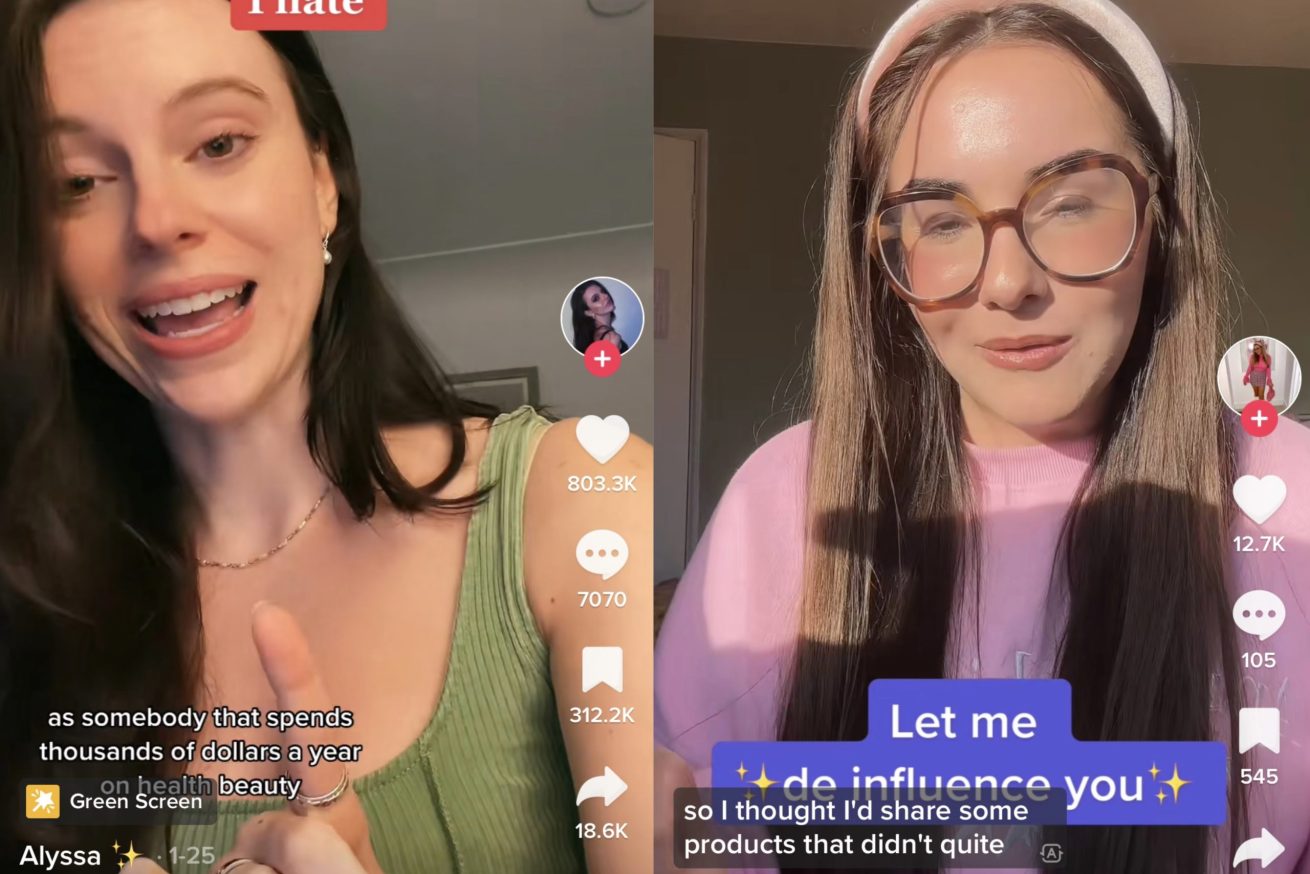The new ‘deinfluencing’ trend has been making waves across TikTok. Currently, the hashtag #deinfluencing has 200M+ views. The trend is quite literally influencers taking a stand to over-consuming unnecessary products; these are products that they have bought/used, then explaining why you shouldn’t waste your money on them. These are often the trending products we see on socials and are the products being pushed to consumers via ads or paid partnerships.
It really is one to keep in mind when it comes to influencer marketing – this may affect the way we think about creating influencer content from here on out. We can envision brands moving towards authentic influencer videos or trend videos, perhaps using micro or macro influencers who organically love the brands as opposed to just big influencer names.
In an article by Dazed Digital titled ‘The rise of the deinfluencer’, they point out that “deinfluencing should urge consumers to think critically about their purchases and evaluate their necessity”. In a time where the cost of living is affecting everyone around us, being selective about buying products is at the forefront of most people’s minds.
The article goes on to say “influencers are slating products they didn’t like and redirecting followers to other products or their ‘dupes’”. Dupes are and have been a huge trend on socials, where influencers share lower-cost versions of popular high-end brand products, showing that there are products that work exactly the same but for a fraction of the price.
Written by Lucie


